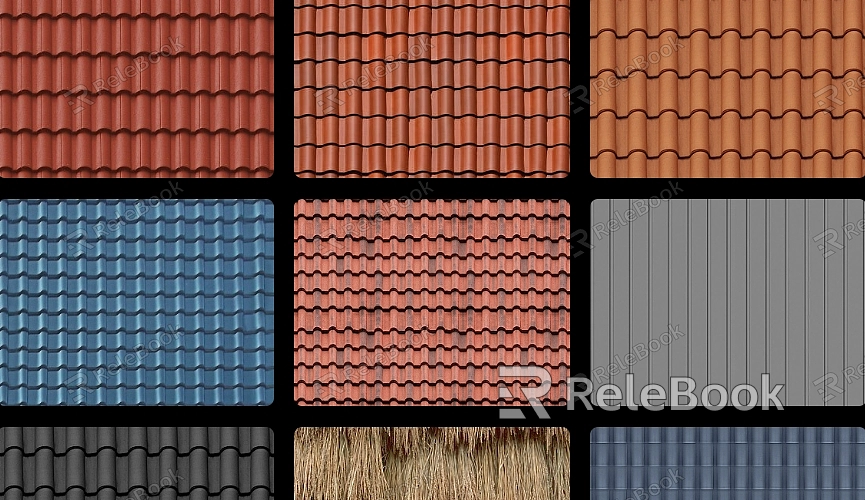Types of Roofing Textures in 3ds Max
In the rendering of 3D models and virtual scenes, roofing texture is a crucial element in constructing the appearance of buildings. Roofing textures not only enhance the realism of architectural model renderings but also contribute to different styles and atmospheres in the overall scene rendering. Moreover, the effects produced by different roofing textures can represent various architectural styles and periods. Here are some common types of roofing textures.

1. Tile Texture: Tiles are a traditional roofing material. In 3D rendering, tile textures can include ceramic tiles, slate tiles, or a combination of materials. These textures typically exhibit features of overlap and layering, simulating natural variations in sunlight and shadows on the tiles.
2. Metal Roof Texture: Metal roofs are commonly used in modern architecture, featuring smooth surfaces and reflective properties. In 3D rendering of metal roofs, effects such as stainless steel, copper, or aluminum can be included, showcasing glossiness and the impact of weather on the surface.
3. Asphalt Shingle Texture: Asphalt shingles are commonly used in residential building models. The texture is intricate, with a variety of colors, often used to simulate roofs with waterproof and weather-resistant characteristics.
4. Grass or Thatch Roof Texture: Used to create rural models or buildings with a traditional style, this texture can showcase the effect of a roof made from natural grass or thatch, providing a rugged and primitive feel.
5. Slate and Stone Texture: Used to present a more ancient or traditional architectural style, these textures display the natural cracks and variations in layers of rocks.
6. Solar Panel Texture: Used for the roofs of modern eco-friendly buildings, this texture portrays the smooth surface and unique reflective properties of solar panels.
7. Transparent or Translucent Texture: Used to construct scenes with skylights or garden greenhouse roofs, this texture can simulate glass or plastic materials and allow light to pass through.
By utilizing these various roofing textures, we can create a variety of architectural model effects in 3D design software. Different textures not only impact the visual aesthetics but also influence the play of light and shadow, color, and the overall atmosphere of the building. If you need a multitude of high-quality textures, you can download them from Relebook and import them directly into your models after downloading.

